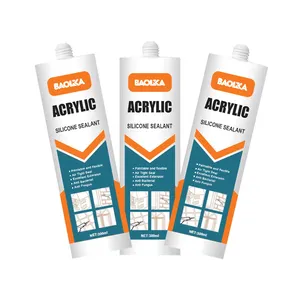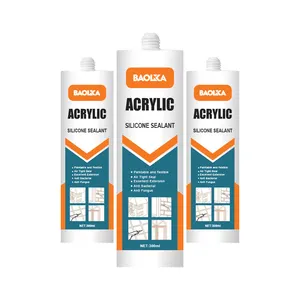
All categories
Featured selections
Trade Assurance
Buyer Central
Help Center
Get the app
Become a supplier

(1258 products available)













































Air duct glue is an adhesive material used to seal and attach components of air ducts in HVAC systems. It helps ensure optimal airflow, and energy efficiency, and prevents contaminants from entering the air system. The glue is specifically designed for use on metal and plastic or flex air ducts.
There are different types of air duct glue depending on the material it is designed for. They include;
Sheet metal duct glue
This glue is designed for use with sheet metal ducts. It is ideal for metal-on-metal bonding. The air duct glues create a strong bond that can withstand the airflow and pressure within the HVAC system. Sometimes, duct tape is used to secure the joints once the glue has been applied. Popular adhesives for sheet metal ducts include silicone adhesives, and polyurethane adhesives.
Plastic duct glue
This glue is specifically designed for plastic ducts. It helps to create a strong bond between the ducting material. The glue ensures a smooth airflow and prevents air leaks. Some plastics like PVC plastics require a specific solvent cement to create a bond. Other adhesives used for plastic ducts include cyanoacrylate adhesives and rubber-based adhesives.
Flex duct glue
This glue is designed for flexible ducts. It helps to create a strong bond between the ducting material and ensure a proper seal. The glue can accommodate the flexibility required in the HVAC system. It is usually water-based and non-toxic. Common flex duct glues include acrylic-based adhesives and latex-based adhesives.
Fiberglass duct glue
Fiberglass air ducts do not use adhesives. Instead, they use a friction fit collar. The collar is placed on the end of the duct to connect it to the other fiberglass ducts. Duct tape is then used to secure the connection. However, some fiberglass ducts may use a silicone-based adhesive to bond fiberglass ducts.
As mentioned, air duct glue is used to seal and bond metal, plastic, and fiberglass components in HVAC systems. Below are the functions of air duct glue:
Sealing Duct Joints and Leaks:
The primary function of air duct glue is to seal duct joints and leaks. It fills gaps and cracks at duct joints, preventing air leaks. This ensures that air flows efficiently through the duct, reducing energy loss. It also reduces the amount of conditioned air that escapes through leaks into unconditioned spaces. Moreover, it enhances the efficiency of HVAC systems. Proper sealing minimizes the workload on HVAC systems, leading to energy savings. Additionally, it prevents contaminants from entering the duct.
Bonding Duct Materials:
The air duct glue creates a strong bond between different duct materials. It unites metal, plastic, and fiberglass components to create a durable HVAC system. Strong bonds ensure the structural integrity of the ducts. This maintains proper airflow and prevents leaks. The duct glue provides a long-lasting bond that can withstand the conditions within the duct. These conditions include extreme temperatures and constant airflow.
Preventing Condensation:
Air duct glues create a seal that prevents water from condensing inside the duct. This is important because water can damage duct systems and promote the growth of mold. The glue prevents mold and mildew growth, creating a healthy indoor environment. Additionally, it prevents water damage to insulation. Insulation within the duct prevents the loss of conditioned air. However, water can damage it and render it ineffective.
Temperature Resistance:
Duct glues are designed to resist high and low temperatures. Some glues can withstand temperatures as high as 2000 degrees Fahrenheit. This makes them effective in extreme temperature conditions. Temperature resistance ensures that the glue maintains its integrity when bonded to ducts. This prevents the glue from becoming brittle or soft, which can cause leaks.
Quick Drying and Curing:
Some air duct glues dry and cure quickly. This allows the ductwork to be used within a short time. Quick drying glues form a bond that is not affected by the airflow within the ducts. It also enhances the efficiency of HVAC systems. Less downtime leads to less energy loss. Moreover, it enables timely completion of projects.
Many industries rely on adhesives to bond air ducts during installation. These industries include:
When choosing an air duct adhesive, consider the following factors to ensure that the selected product will meet the system requirements and perform optimally. These factors also guarantee safety.
Temperature Resistance
The temperature range indicates the maximum and minimum temperatures the glue can resist. Air duct systems carry air from the HVAC system. As such, the temperature resistance of the glue should be equal to or exceed the air temperature range. Otherwise, the glue will fail.
Once or Two-Part Adhesive
These two adhesives mix and cure differently. A two-part adhesive is mixed before applying, while a one-part adhesive is applied directly. Understanding the mixing process helps choose the right one based on expertise level.
Cure Time
Some adhesives cure quickly, while others take longer. Quick-curing adhesives are suitable for projects that need to be completed immediately. In contrast, those with a longer curing time can be used when the project isn't urgent.
Viscosity
Some adhesives are thin and runny, while others are thick. The thickness of the glue can affect the application, so it's vital to choose the right viscosity based on the user's skill level. For example, a thick adhesive is ideal for those that want to fill gaps, while a thin one is perfect for a smooth application.
Compatibility
Some glues work best on specific materials, while others are versatile. It is important to choose air duct glues that are compatible with the air duct material to guarantee a strong bond.
Safety
Some adhesives emit VOCs that can be harmful when inhaled. It is important to choose a glue with low or no VOCs. Also, the work area should be properly ventilated when using these adhesives.
Water Resistance
If the air duct is installed in areas with high humidity or moisture, it is best to choose a water-resistant adhesive. This will guarantee that the glue maintains its integrity for months.
Q1. Why is the air duct glue important?
A1. The glue is important because it helps keep air ducts connected. It creates a tight seal that helps the HVAC system work well. The seal reduces air leaks. It also makes sure the ductwork is safe and durable.
Q2. What are the challenges of using glue on air ducts?
A2. One major challenge is that once the glue is dried, it cannot be removed. It creates a permanent bond between the materials. This makes the glue less suitable for temporary connections or installations.
Q3. Is silicone safe to use on air ducts?
A3. Yes, silicone is safe to use on air ducts. It is resistant to extreme temperatures. It can also be used on metal and fiberglass ducts. Silicone creates a durable seal that helps reduce air leaks.
Q4. Can duct tape be used as an air duct connector?
A4. No. Duct tape cannot be used as an air duct connector. In the past, it was used to connect ducts. But it was found that the tape deteriorates over time. It also loses its sticking ability. This creates air leaks in the HVAC system.
Q5. What is the curing time for air duct glue?
A5. The curing time for the glue varies from one product to another. Some glues take a few minutes to dry on fiberglass ducts. Others can take up to 24 hours to fully cure.